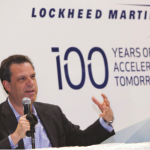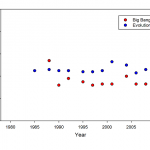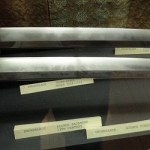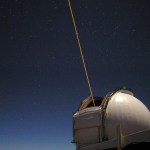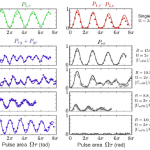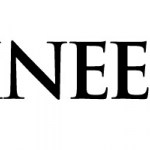Of the four new articles online on our website, three happen, purely by accident, to be on physics research. The three are very different, and yet each is an illustration of the ways that basic physics research changes our world – in small and large, practical and enlightening ways. And each is situated at a different intersection between the technological and the theoretical – a technological breakthrough that resulted from a successful attempt to provide proof for a theoretical construct, new inventions based on elementary physical principles of light, and a theory substantiated through a…
Technology
By F. Mark Modzelewski
World's Largest STEM Event to Excite and Inspire Educators, Administrators, Students & Families
The USA Science & Engineering Festival (www.USAScienceFestival.org), supported by presenting host sponsor Lockheed Martin, is pleased to join forces with the U.S. News STEM Solutions (http://usnewsstemsolutions.com/) to host their National Conference April 23-25, 2014 at the Walter E. Washington Convention Center in Washington, D.C. The combined Festival and Conference will bring together educators, scientists, performers, business and government leaders -- as well as…
Here we go with another one.
Three weeks ago, I mentioned in a post that the week of October 7 to 14 was declared by our very own United States Senate to be Naturopathic Medicine Week, which I declared unilaterally through my power as managing editor of Science-Based Medicine (for what that's worth) to be Quackery Week. One wonders where the Senate found the time to consider and vote for S.Res.221, which reads:
S.Res.221 – A resolution designating the week of October 7 through October 13, 2013, as “Naturopathic Medicine Week” to recognize the value of naturopathic medicine in providing safe…
Things have been a bit too serious around here lately. After all, yesterday I wrote about obesity and chemotherapy, while the day before that I did an even lengthier than usual deconstruction of some claims by anti-Obamacare activists, which seemed particularly appropriate to me given that a group of wingnuts has just succeeded in mostly shutting down our government because they are opposed to Obamacare. Come to think of it, given the nastiness that's going on in Washington right now, I could use something light, an easy target even. And who better to serve that role than everyone's favorite…
By Jeff Wilcox, Lockheed Martin Vice President for Engineering
Planning for the third USA Science & Engineering Festival is well underway, and I couldn’t be more excited.
As the vice president for engineering at Lockheed Martin, and the father of three sons, I’m proud to be part of a company that serves as the founding and presenting host of this Festival, which will inspire our youngest Americans with the power of science, technology, engineering and math (STEM). We have a vested interest in STEM—not just because it’s critical to the future of our company, but because it’s…
Nearly 50 billion pounds of chicken (about eight billion chickens’ worth, or 37 billion pounds of poultry products) were processed in the United States in 2012 by about half a million workers, many of whom handle more than 100 birds per minute. This labor involves standing in chilled processing plant facilities, cutting, gutting, scalding, defeathering and hanging birds as they speed by on automated machinery, often at more than one bird per second. According to the US Occupational Safety and Health Administration (OSHA), since 1975,workers in this industry have consistently suffered injuries…
Adam Frank has an op-ed at the New York Times that tells a very familiar story: science is on the decline, and we're living in an "Age of Denial".
IN 1982, polls showed that 44 percent of Americans believed God had created human beings in their present form. Thirty years later, the fraction of the population who are creationists is 46 percent.
In 1989, when “climate change” had just entered the public lexicon, 63 percent of Americans understood it was a problem. Almost 25 years later, that proportion is actually a bit lower, at 58 percent.
The timeline of these polls defines my career in…
Via a retweeted link from Thony C. on Twitter, I ran across a blog post declaring science a "bourgeois pastime." The argument, attributed to a book by Dierdre McCloskey is that rather than being at the root of economic progress, scientific advances are a by-product of economic advances. As society got more wealthy, it was able to direct more resources to science, which made great advances possible.
And, you know, if you're looking to make a bold and contrarian argument, you can certainly do that. Unfortunately, the bit quoted from McCloskey as an illustration of the power of the argument is:…
"But certainly the laser proved to be what I realized it was going to be. At that moment in my life I was too ignorant in business law to be able to do it right, and if I did it over again probably the same damn thing would happen." -Gordon Gould, inventor of the laser
You're used to the iconic image of an observatory's dome surrounded by a dark sky. From within, a telescope peers up at the heavens. And with a huge amount of light-gathering power that dwarfs a fully dilated human eye, we can use this tremendous tool to peek into the dark depths of the Universe.
Image credit: Fort Lewis…
I'm always a little ambivalent about writing up papers that have also been written up in Physics: on the one hand, they make a free PDF of the paper available, which allows me to reproduce figures from the paper in my post, since I'm not breaking a paywall to do it. Which makes it much more attractive to write these up. On the other hand, though, they do a pretty good job writing accessible descriptions, so there's not that much for me to add.
In the case of this paper, I'll write it up anyway (albeit somewhat more briefly than usual, because they already did a nice job), just because the…
by Kim Krisberg
When most of us pass by a new high-rise or drive down a new road, we rarely think: Did the builders and planners consider my health? However, a new report from the U.S. Environmental Protection Agency offers evidence that certain types of land use and transportation decisions can indeed limit the human health and environmental impacts of development.
Released in mid-June, the publication is a revised and updated version of an EPA report initially published in 2001. Agency officials said the report was particularly timely as the nation's built environments are quickly changing…
ENGINEERING.COM, with its mission to inform, inspire and entertain the world's engineers -- and future engineers -- is returning as a key sponsor of the USA Science & Engineering Festival and Expo in 2014.
Widely known for having its fingers directly on the pulse of the fascinating, ever-evolving realm of engineering innovation, ENGINEERING.COM will help expand the scope and reach of Festival excitement, education and inspiration by serving once again as the event's official videographer, which will include capturing the bevy of high-profile activity taking place during Expo…
This post was co-authored by Ali Arab, Ph.D., an assistant professor of statistics at Georgetown University.
We are living in a global society driven by innovation, creativity and entrepreneurship. Success depends upon free access to information and unfettered research by scholars. Yet targeted academic boycotts are increasingly common, throwing more and more roadblocks on the way to progress.
Earlier in May 2013, the decision by the world-renowned British cosmologist Stephen Hawking to withdraw from a major academic conference in Israel reignited discussions among scholars on whether or…
A little while back, I posted about the pro-theorist bias in popular physics, and Ashutosh Jogalekar offers a long and detailed response, which of course was posted on a day when I spent six hours driving to Quebec City for a conference. Sigh.
Happily, ZapperZ and Tom at Swans On Tea offer more or less the response I would've if I'd had time and Internet connectivity. Tom in particular gives a very thorough exploration of some of the reasons why experiment gets downplayed in popular physics. I particularly liked this bit:
I’m going to put forth a possibility: maybe we have a harder job, in…
The Colorado River, recently named America’s most endangered river, supports millions of people in the American Southwest and northwest Mexico and helps irrigate millions of acres of land. It is shared by seven states in the U.S. and Mexico, through a complex series of legal agreements and treaties.
Yet every drop of water on the river is accounted for, used, reused, and transpired away, and today, no water reaches the Colorado River delta in an average year. Quite simply, demands on the river exceed the river’s average supply, and this problem is projected to get worse as populations…
What are Origami Nanosat Telescopes? How about Kinetic Inductance Detectors?
More importantly, what should we do with them?
NASA's Astrophysics is doing a Roadmap exercise, with the stated intent to look at science goals, technology and capabilities up to 30 years out!
White papers were solicited a few weeks ago, and about 100 were received and are archived online, about 3/4 on science and 1/4 on technology.
There was originally supposed to be a workshop for presentation of selected white papers, but in the world of sequestration that was not feasible, so instead there was a two day online…
Now there's a quote for you! Provocative in it's shortsightedness and fairly ignorant of how the interplay between scientific discovery and commercialization/technology transfer works. Commercial products are engineered and developed out of basic scientific discoveries.
So who said that?
Sadly, it was the John McDougall, President of the National Research Council of Canada talking about the restructuring and refocusing of the NRC.
Here's some more from the Sun News article:
The government of Canada believes there is a place for curiosity-driven, fundamental scientific research, but the…
Clingfish (Gobiesox maeandricus).Image credit: Thomas Kleinteich
Live Science posted a story recently on the sticking power of clingfish. Northern clingfish, like the one shown in the image above, live in turbulent waters off the Pacific Coast of North America. In order to cling to surfaces, the animals have what are called adhesion discs on their bellies that they use to hold on tightly to various surfaces.
Biologist Adam Summers at the University of Washington has been studying how these fish cling to surfaces. His research team put a variety of sandpaper textures into a tank of water…
“Talent hits the target no one else can hit; genius hits the target no one else can see.” -Arthur Schopenhauer
You've probably heard the story, by now, of Kiera Wilmot, the 16-year-old girl who performed a mildly dangerous chemistry experiment on school grounds, mixing together household cleaner and aluminum inside a sealed container. You can get the full story (excellently covered) via DNLee, but to give you the 15-second version, she was arrested, expelled, and is presently being charged with a felony that carries up to 5 years in prison. The school board is not backing down, the attorney…
In the United States, the federal government has long had a prominent role in funding science research. Be it the $30 billion a year or so that funds the National Institutes of Health or the $5 or $6 billion a year allotted to the National Science Foundation, the government funds a lot of basic and applied research, and this is in general a good thing. The number of discoveries and advances that have come out of this funding have well repaid the investment and much more. There is, however, a downside to this funding that's a pretty obvious consequence any time the government funds anything,…

